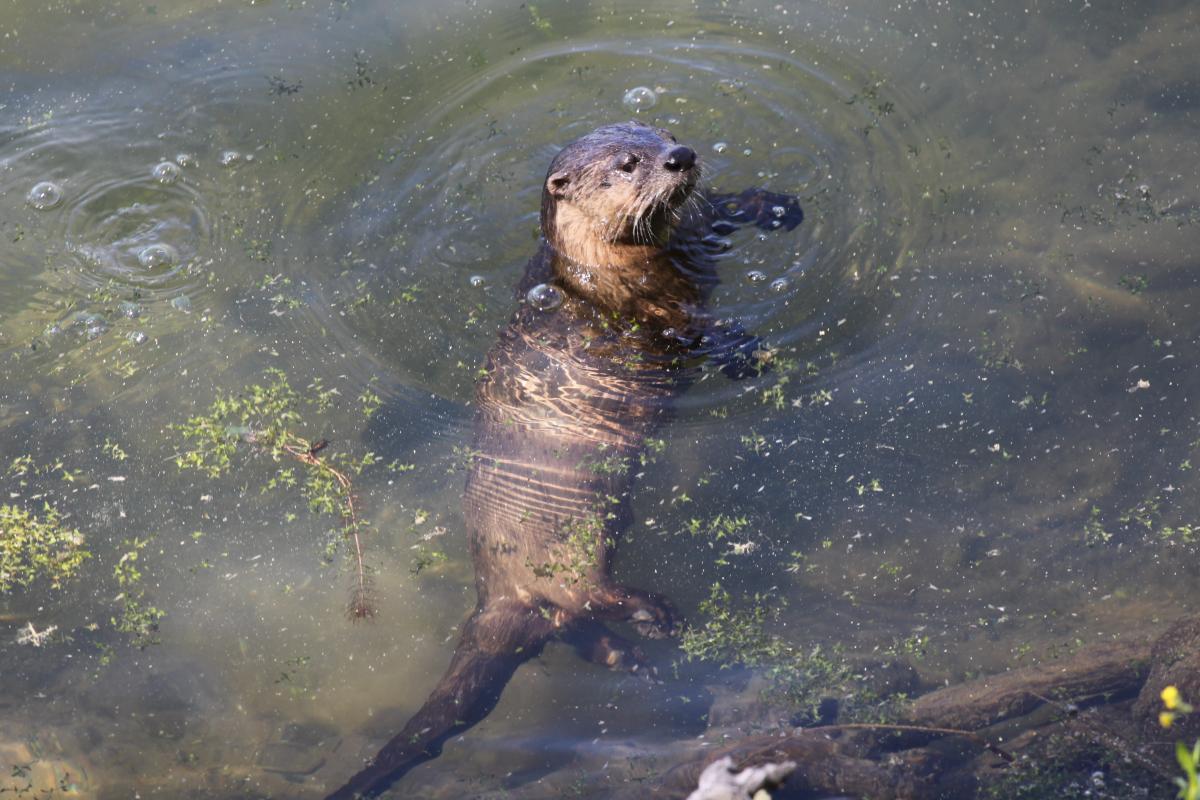The "What" and the "Why"

Water is fundamental for all life, but in many urban and suburban areas, waterways have been damaged by human impacts. Many of these rivers and coastal areas are plagued by toxins, pollutants, and trash, which can negatively impact human health, local economies, and harm precious wildlife. Monitoring water quality for a wide range of pollutants and pathogens is beyond the capacity of most communities and researchers.
Instead, scientists look for sentinel species, which are animals that are used to monitor environmental conditions. Often, they are sensitive to negative environmental conditions and can be infected by the same parasites and pollutants as humans. Tracking these sentinel animals, and their poop, is generally easier than making lots of water quality measurements and can often provide lots of information about the health of the environment.
Despite being a little elusive and primarily nocturnal, North American river otters are playful, social animals that are also top predators in the Chesapeake Bay. Along the shore they use special places called “latrines” to poop, urinate, eat and, most importantly, socialize. Thus, these latrines provide non-invasive access to study river otter behavior, diet, health, and overall ecology.
The presence of otters in rivers and coastal areas is generally a sign of good water quality and healthy waterways. Additionally, river otters eat many of the same seafood species that people do, including oysters, clams, white perch, and shad. By studying what the river otters eat within our local waters, we can learn what parasites, pathogens, and pollutants these food sources might be carrying that not only impact the river otters but could also be harmful for people.
Because our research team at SERC can’t be everywhere at once, we are working with several organizations and volunteers to map out where river otters are around the Chesapeake Bay. The Chesapeake Bay Otter Alliance (CBOA) includes organizations across the National Capital Region, including the Smithsonian Institution, the Anacostia Watershed Society, the Rivanna Conservation Alliance, DOEE, EJJI, and the National Aquarium. We have also worked in collaboration with many state, county, and regional parks.
